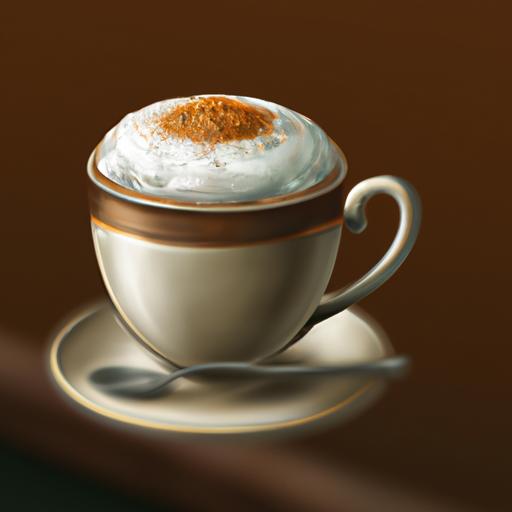Do your friends always impress you with their knowledge of Italian lingo? Do you want to join the conversation and learn how to say cappuccino in Italian? If so, youre in the right place! This article will walk you through the steps of how to pronounce cappuccino in Italian, the origin of the word cappuccino, how its made, the types of cappuccino, the traditional cappuccino cup, when to enjoy cappuccino in Italy, and cappuccino etiquette.
By the end of this article, youll be able to confidently order cappuccino in Italian and join the conversation.
Lets get started!.
Table of Contents
Short Answer
Cappuccino is an Italian word and is pronounced as “kah-pooh-chee-noh”.
It is a type of coffee beverage made with espresso and steamed milk, usually topped with foam.
The word cappuccino comes from the Italian word cappuccio, meaning hood or something that covers the head.
How To Pronounce Cappuccino in Italian
Pronouncing cappuccino in Italian is quite easy.
The word is pronounced “cappuccino” with the emphasis on the second syllable, which is the “poo” sound.
It’s also sometimes referred to as a “capo” or “caff latte,” which are both pronounced similarly.
The word “cappuccino” is derived from the Italian word for “cap,” referring to the distinct shape of the traditional cappuccino cup.
The “cap” sound is also an essential part of the pronunciation of cappuccino in Italian.
When you’re ordering cappuccino in Italy, you can simply say “un cappuccino, per favore” which translates to “a cappuccino, please.
” It’s important to remember to emphasize the second syllable when pronouncing cappuccino, as this will ensure that you get the right drink.
Additionally, it’s also common to hear cappuccino referred to as a “caff latte,” which means “coffee with milk” in Italian.
Another helpful tip for ordering cappuccino in Italy is to remember that it is usually served in the morning, whereas espresso is served throughout the day.
If you’re looking for a more decadent treat, try ordering a cappuccino con crema, or “cappuccino with cream,” which is served with a thick layer of cream on top.
In conclusion, knowing how to say cappuccino in Italian is essential if you’re visiting the country.
Pronouncing cappuccino correctly is the key to making sure you get the right drink.
Additionally, it’s important to remember that cappuccino is usually served in the morning, while espresso is served throughout the day.
Origin of the Word Cappuccino

The word cappuccino originates from the Italian language and is derived from the word capo which means head in Italian.
The name is a reference to the unique shape of the cup, which has a tall, rounded top and a body that tapers down, resembling the shape of a monks hood or cap.
The iconic look of the cappuccino cup has been a part of Italian caf culture for centuries and is still used today.
The cappuccino was first invented in Italy in the early 1900s, when espresso machines were first developed.
At the time, the drink was known as a capo and was made with just espresso, steamed milk, and a sprinkle of cocoa powder.
Over the years, the recipe evolved and the addition of foamed milk and other toppings became popular.
By the 1950s, the cappuccino had become an iconic Italian coffee drink.
Today, the cappuccino is a beloved Italian tradition and is enjoyed all over the world.
The traditional cappuccino is still made with espresso, steamed milk, and topped with foam and a sprinkle of cocoa powder.
However, modern variations of the drink often include different types of milk (such as almond or soy), syrups, spices, and other creative ingredients.
How Cappuccino Is Made
Cappuccino is an Italian coffee drink that is made with espresso and steamed milk, usually topped with foam or chocolate shavings.
The traditional cappuccino cup is shaped like a cap, hence the name cappuccino which is derived from the Italian word for cap.
To make a cappuccino, espresso is first brewed and then hot milk is added.
The milk is then steamed to create a creamy, frothy texture.
The amount of foam on top of the cappuccino is entirely up to the customer; some prefer a little foam while others like to have a lot.
Finally, the cappuccino is topped with either chocolate shavings, or a sprinkle of cinnamon or cocoa powder.
Cappuccino is a popular drink in Italy and is often enjoyed at any time of day.
In fact, it is a key part of Italian cafe culture and is usually served with a pastry or biscotti.
Cappuccino can also be enjoyed as a dessert, with a shot of espresso poured over the top.
Making a cappuccino at home is relatively easy, but it does require some specialty equipment.
You will need an espresso machine, a milk frother, and a cappuccino cup.
Once you have all the necessary equipment, you can start by brewing your espresso and steaming your milk.
Then, pour the espresso into the cappuccino cup, followed by the steamed milk.
Finally, top it off with foam or chocolate shavings and enjoy your homemade cappuccino.
Types of Cappuccino

When it comes to cappuccino, there are a few different types to choose from.
The classic cappuccino is made with espresso and steamed milk, usually topped with foam or chocolate shavings.
A latte is a cappuccino with more milk added, while a mocha is a cappuccino with added chocolate.
If youre feeling adventurous, you can also try a macchiato, which is a cappuccino with a shot of espresso added.
For a lighter version, you can order a cortado, which is a cappuccino with a smaller amount of milk.
No matter which type of cappuccino you order, youll have a delicious Italian coffee drink to enjoy.
The Traditional Cappuccino Cup
When it comes to cappuccino, the traditional cup plays an important role in the Italian experience.
The traditional cappuccino cup is round and tall, with a wide brim and a thick handle.
It is usually made from ceramic or porcelain and is typically decorated with colorful motifs.
The cup has a distinct shape that is designed to keep the espresso and milk hot, while also maintaining a balanced temperature for the drink itself.
In Italy, cappuccino is often served in a larger cup known as a “tazza,” which means “cup” in Italian.
This cup is slightly larger than the traditional cappuccino cup and is often used for larger servings of cappuccino or for cappuccino to share.
The larger cup allows for more milk to be added to the espresso, creating a richer, creamier drink.
In addition, the larger cup allows for more foam to be added to the top of the drink.
The foam is an essential part of the cappuccino experience, as it adds a light and creamy texture to the drink.
The foam is also the perfect place to sprinkle a dusting of chocolate or cocoa powder for an extra special touch.
When To Enjoy Cappuccino in Italy

When it comes to enjoying cappuccino in Italy, the possibilities are nearly endless.
While cappuccino is traditionally an early-morning beverage, it is also enjoyed as an afternoon pick-me-up or an after-dinner treat.
Italian cafe culture is full of opportunities to enjoy a cappuccino.
From the early morning rush hour to the late night passeggiata, cappuccino is an essential part of Italian cafe culture.
In the morning, Italians often enjoy cappuccino with breakfast pastries like cornetti or brioche.
This combination of a sweet pastry and a creamy cappuccino is a great way to start the day.
Cappuccino is also often enjoyed as an afternoon pick-me-up or a pre-dinner aperitivo.
In the late afternoon, many Italians will stop for a cappuccino and a cornetto before taking an evening walk.
After dinner, cappuccino is a popular after-dinner treat.
The combination of rich espresso and creamy steamed milk is a great way to end a meal.
Italians often finish their meals with a cappuccino and a biscotti or a slice of cake.
No matter what time of day it is, cappuccino is an essential part of Italian cafe culture.
Enjoying a cappuccino is a great way to experience Italy and its vibrant cafe culture.
Cappuccino Etiquette
When it comes to cappuccino etiquette in Italy, there are a few things to keep in mind.
Firstly, when ordering a cappuccino in Italy, its important to remember that it is typically only served in the morning or after lunch, and never after dinner.
Secondly, it is also essential to remember that cappuccino should be enjoyed quickly it is not meant to be sipped slowly like an espresso.
Lastly, it is important to be aware that cappuccino is generally not served with sugar or milk, so if youd like to sweeten it, you should ask for a side of sugar or some steamed milk.
Additionally, it is important to be aware that cappuccinos should not be served too hot the ideal temperature for cappuccino should be around 65-70 degrees Celsius, so be sure to let it cool down a bit before drinking it.
Lastly, when it comes to cappuccino etiquette, it is important to remember that it should never be served with a spoon.
Cappuccino should be enjoyed with a small spoon to stir in the sugar, if desired, and a small sip should be taken directly from the cup.
Final Thoughts
Now that you know how to say cappuccino in Italian, the origin of the word, how it is made, the types of cappuccino, the traditional cappuccino cup, and when to enjoy cappuccino in Italy, youre ready to take part in the Italian cafe culture.
Show your appreciation for this classic Italian coffee drink by following the appropriate etiquette.
So why not take a trip to Italy and enjoy a delicious cappuccino?.

